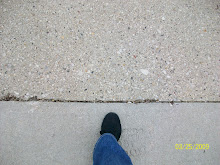Thursday, March 26, 2009
Blog #6
Ethnographic films and photography are seemingly intertwined because they served the same purpose; to try to explore/expose different cultures and the way they lived. The ethnographic films were biased since their perspective was from white filmmakers and because of this native americans were viewed as subjects. Photos were used as a form of propaganda, native americans were seen with certain costume-like attire such as feathers, costumes, buffalo hides) and the lighting was often dark and shadowy subliminally communicating a savage like identity, these photos and films were seen by people who hadn't any weren't likely to connect with native americans which created a form of prejudice against them and allowed a genocide-like interaction to be accepted. The pictures of the women were indeed pornographic, the pictures possess a strong sense of masculinity due to the pose, the dark overcast in the photos and the strong, angular poses of their bodies. These photos reinforces the idea of the native american as a savage. Native American women were often viewed as too masculine, rather than courageous and strong and that is clear in the photos, yet the exposure of their breasts seems to be a form of mockery, as if exposing them in such a manner would obliterate any sort of fear/uneasiness most europeans had with the native american women's strength.
Friday, March 13, 2009

I am interested in working on an archival history of Johnson's Park. I am very excited to research this neighborhood and see what it looked like before and how it has evolved over time. I am interested in hearing the stories of the Elders and also capturing the youth. I want to create a document that gives an overall historical, cultural snapshot of this neighborhood. I also want to allow my research through newspaper articles, old photos, etc. to speak my own interpretation of this neighborhood, and its energy.
Friday, March 6, 2009
Blog 4
It is clear that the difference between Vin Diesel and Senna is based on their own individual experiences. For example, Vin Diesel did not gain acceptance from either worlds (Italian or African American) which was obvious in his short film multi-facial. In his experience, he was viewed as undefinable, casting calls either said he wasn't black enough/urban enough or italian enough. This forced him to embrace his undefinable-ness. He wanted to be recognized for his talent alone, opposed to being categorized by race. It seems as if Vin Diesel embraces this new idea of racelessness, which is ultimately where America is headed. Senna seems to feel more accepted in the African american community, it is true that African American communities have a stronger likelihood of accepting biracial heritage, opposed to white society. I think this is the very reason why she identifies as black, simply because of the welcoming acceptance and because of her strong pride in the culture. The standards of beauty within american films definitely adhere to European-american standards still, which means that despite the range of cultures onscreen, they all still represent those standards. For example, the film The fast and the Furious had primarily asian and latin american women cast, but they were all tall and thin, with symmetrical facial structures and no "exotic features". This is a European standard of beauty and doesn't represent all women of color or the beauty standards within their own culture. Another example is also taken from the Fast and the Furious. Vin Diesel was paired with Paul Walker(anglo-american actor) and they were viewed as a heroic team. The hero/leader of the film was Vin Diesel but he was paired with a white co-actor, whose role wasn't necessarily needed but makes the audience feel more comfortable with an undefinable main character because of his co-partner being white. This is also evident in Eddie Murphy's film Beverly Hills Cop II.
Subscribe to:
Posts (Atom)
